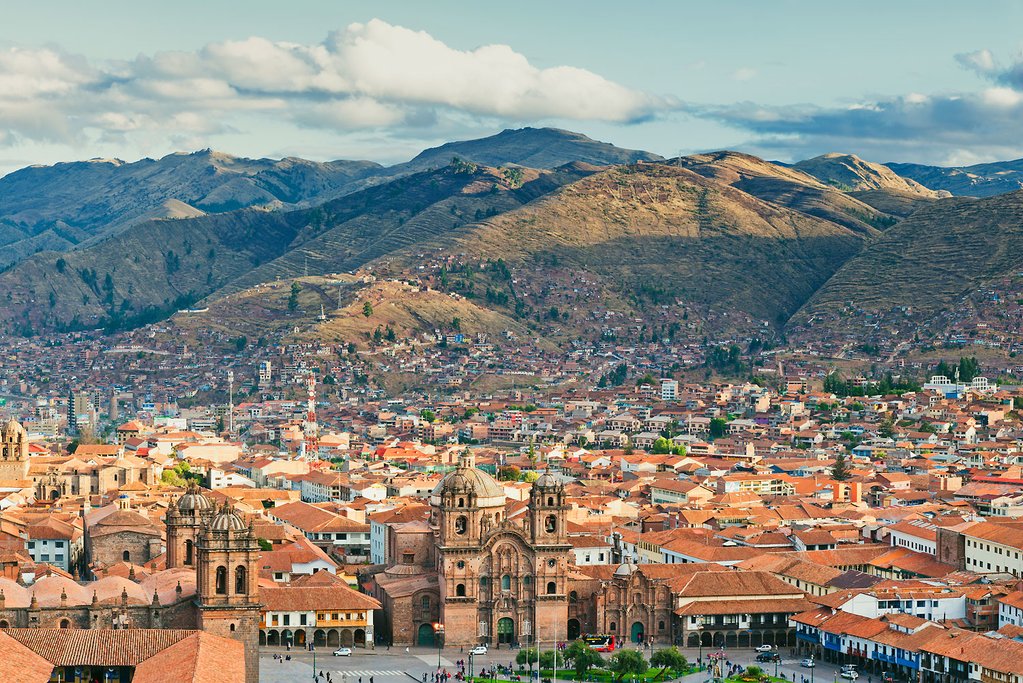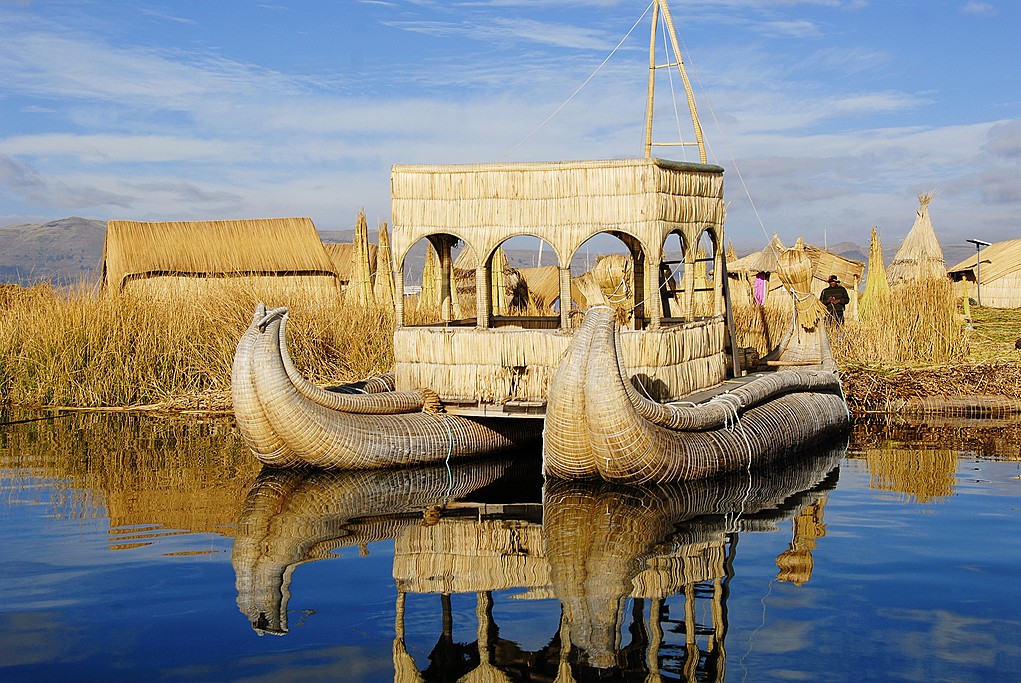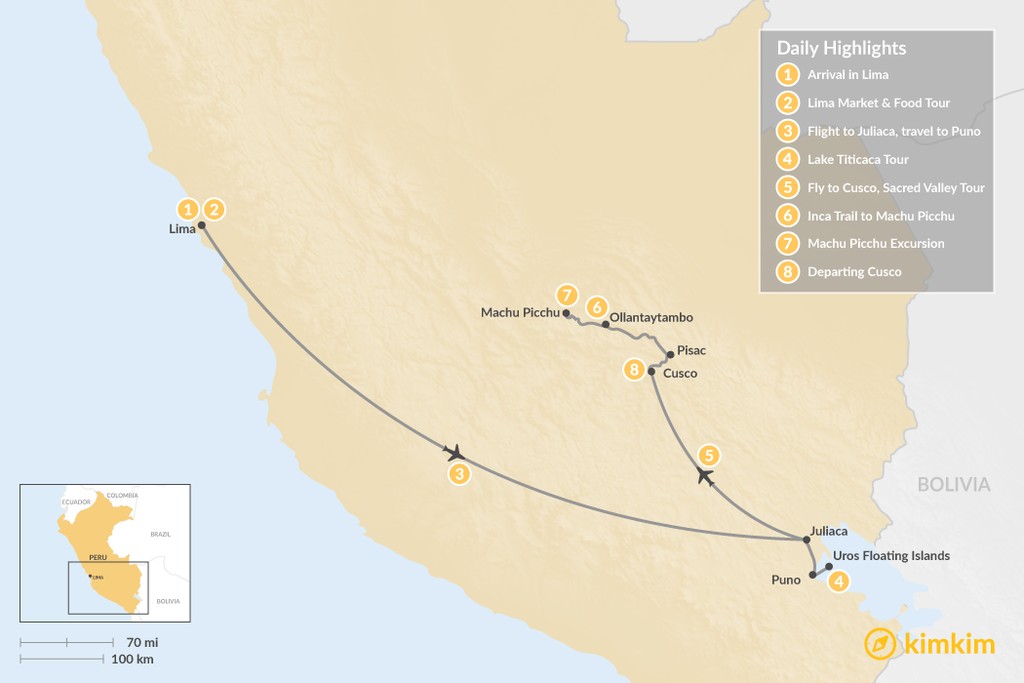Highlights
- Experience the cultural and culinary scenes in Lima
- Take a ferry to the remarkable floating reed islands of Lake Titicaca
- Walk the Inca Trail for a day, ending at marvelous Machu Picchu
- Visit the textile markets of Cusco and pick up authentic souvenirs
Brief Itinerary
| Day | Highlights | Overnight |
|---|---|---|
| Day 1 | Arrival in Lima | Lima |
| Day 2 | Lima Market & Food Tour | Lima |
| Day 3 | Arriving in Puno: Lima - Puno | Puno |
| Day 4 | Reed Boats, Photography & Uros Floating Islands | Puno |
| Day 5 | Arriving in Cusco: Puno - Cusco | Cusco |
| Day 6 | Inca Trail to Machu Picchu: Ollantaytambo - Aguas Calientes | Aguas Calientes |
| Day 7 | Machu Picchu Excursion: Aguas Calientes - Machu Picchu - Cusco | Cusco |
| Day 8 | Departing Cusco |
Detailed overview
Day 1: Arrival in Lima

¡Bienvenidos! Welcome to Lima, Peru's largest city and central metropolitan hub, and home to one-third of the country's population. Located at the site of a pre-Columbian indigenous Ychsma settlement, which was conquered by the Inca empire in the 15th century and later by the Spanish conquistadores, Lima has a fascinating history and a diverse mix of cultures. Amerindian, European, Afro-Peruvian, and Asian—especially Chinese and Japanese—influences make Lima a dynamic and exciting city to explore.
Lima's breezy location on the Pacific Ocean and mild desert climate make it the perfect city for exploring on foot. Head downtown to mingle with locals, stretch your legs, and grab a bite to eat in one of the many award-winning restaurants.
Suggested activities include:
- Explore the historic center of Lima, a UNESCO World Heritage Site packed with fascinating Spanish architecture. Start with a scenic tour of the colonial downtown, which emanates from the main square. Stroll over to the 16th-century Cathedral, which took 80 years to construct and was built in the grandiose style of the Spanish Empire.
- Visit the Casa Aliaga, a colonial mansion granted by chief conquistador Francisco Pizarro to Jerónimo de Aliaga, one of his captains, in 1535. This is the only house from that era that still belongs to the same family.
- Stroll around the Pueblo Libre district to the privately owned Larco Museum of pre-Columbian art, housed in a beautifully restored viceregal mansion built over a 7th-century pre-Columbian pyramid. The museum boasts a vast pre-Colonial collection of gold and silver artifacts, as well as pieces of erotic art.
- In the evening, head to the eclectic "Love Park" in the upscale coastal district of Miraflores, where you can admire a huge kissing statue and beautiful mosaic walls. The park is built on the cliffs of Chorrillos and is a perfect place to enjoy a spectacular sunset over the Pacific.
- Enjoy a nightcap at an open-air cafe or restaurant in the diverse Miraflores neighborhood.
Day 2: Lima Market & Food Tour

Spend the day discovering Lima through its food. With a vibrant combination of Indigenous American, African, Asian, and European culinary influences, Lima is one of the world's most impressive gastronomic and cultural centers.
Start the day early in Lima's Historical center to visit a local mercacado—a fresh food market—to taste the local produce and sample spices, fruits, and various baked bread. Taste different types of Piscos—a high proof brandy produced locally in the wine-making regions of Peru and Chile. Make sure to try ceviche, a fresh seafood dish marinated with salt and lime juice, and the traditional pisco sour—a Peruvian classic.
Stop for lunch at one of Lima's top restaurants and enjoy a delicious meal on a patio overlooking the Pacific ocean. Stroll to the bohemian district of Barranco—a popular oceanside neighborhood for artists, tourists, and locals alike—for a relaxed afternoon drinking coffee and sampling Peruvian desserts.
Day 3: Arriving in Puno: Lima - Puno

Transfer to the Lima airport in the morning to catch your flight to the Juliaca airport and transfer to the port city of Puno on Lake Titicaca, the largest lake in South America. Although many bodies of water exist at higher elevations, Lake Titicaca's surface elevation of 12,507 ft (3,812 m) makes it the highest lake in the world that is navigatable by large commercial vessels.
Lake Titicaca is a hotbed of ecological diversity, archaeological ruins, tourism, and modern-day farming communities. The coastline outside of Puro is home to the Uros people, who live on floating reed islands made from the totora plant, a thick buoyant reed. Totora is used to make everything from homes and boats to the islands nearly half the size of a football field. The Uros people offer guided tours to their homes and sell traditional handicrafts to supplement their traditional hunting and fishing economy.
Photographers and naturalists will enjoy seeing some of the many hundreds of aquatic and bird species, many of which are found nowhere else on earth.
Chat with a local specialist who can help organize your trip.
Day 4: Reed Boats, Photography & Uros Floating Islands

On your second day on the lake, wake up early to catch a spectacular sunrise over the Andes. Enjoy breakfast, then leave Puno behind and take the ferry to the floating islands.
Here, you’ll have a chance to tour the islands with a local guide. Local people have been constructing reed islands, boats, and homes for hundreds of years. The floating islands provide a fascinating glimpse into life on the lake as well as the impact of tourism on cultural heritage.
After the tour, hop back on the ferry and continue on to the mainland. The ferry takes about an hour, and you’ll land in Puno with enough time to explore the narrow cobblestone streets before settling into your hotel for the night.
Day 5: Arrival in Cusco & Sacred Valley Tour: Puno - Pisac - Ollantaytambo

This morning, you will be transferred to the Juliaca airport to catch your flight to Cusco. Upon arrival in Cusco, you will be greeted and begin your Sacred Valley Tour.
Head to the Awana Kancha Llama Sanctuary, located halfway between Cusco and Pisac. Visit with the alpacas and llamas, then head over to the weaving and textiles exhibition. Local artists demonstrate the process of cleaning, spinning, dyeing, and weaving the intricate details on the colorful textiles. Afterward, browse the shop to select a piece of your own to bring home—each one is a unique and handmade treasure.
Continue on to Pisac, one of the most important archaeological sites in the region. Here you'll explore the ancient Inca burial grounds, irrigation systems, and astronomy centers. Next, go down to the town of Pisac located at the bottom of the valley. This town is famous for its bustling textile market. Select from a wide assortment of colors, styles, and designs for gifts and souvenirs to take home with you. After taking some time to explore, we'll stop for lunch at a local restaurant.
From here, head to the ancient Incan city of Ollantaytambo. Explore the tranquil plaza and surrounding ruins and Inca Fortress, which offer an unparalleled view into the lives of the Inca.
Day 6: Inca Trail to Machu Picchu: Ollantaytambo - Km 104 - Aguas Calientes

Early in the morning take the train from Ollantaytambo to the marker at Kilometer 104 where the Inca Trail starts. Enjoy the scenery of the valley as it turns into a canyon and the train ascends into the cloud forest on the approach to Machu Picchu.
Start the trek to your first archeological site—Chachabamba. This beautiful site is very well preserved thanks to its location in the valley and was likely used for religious purposes and as a gatekeeping point for this entrance to Machu Picchu.
From here ascend for 3 hours to the ruins of Wiñay Wayna at 8,964 ft (2732 m), an ancient rest area for travelers on the Inca trail. Stop here to enjoy a picnic lunch with superb views of the massive green mountains and native orchids.
The trail then becomes gentler and continues through the semi-tropical cloud forest to Intipunku (Sun Gate) where you'll enjoy your first panoramic views of Machu Picchu. Descend half an hour to the citadel for a short break and an opportunity for photos.
After passing through the Sun Gate, take the bus down to Aguas Calientes and check into a hotel to rest and relax in anticipation of a full-day visit to Machu Picchu tomorrow.
Maximum Altitude: 8964 ft (2732 m)
Minimum Altitude: 6850 ft (2088 m)
Distance Travelled: 6.67 miles (10.79 km)
Approximate Walking Time: 7 hours
Day 7: Machu Picchu Excursion: Aguas Calientes - Machu Picchu - Cusco

After an early breakfast, take the first bus up to the Machu Picchu ruins to catch the sunrise at the ancient site. This 15th-century Inca citadel is located at 7,970 ft (2,430 m) and is a masterpiece of engineering that served as a sanctuary and retreat for the Incan Emperor Pachacutec and his royal court.
Machu Picchu, which means "Old Mountain," is considered a World Heritage Site by UNESCO and is one of the new Seven Wonders of the World. Built as a seasonal royal residence, Machu Picchu was rarely home to more than 800 people, and during the royals' absence, a mere 100 servants would remain at the site to maintain the grounds. Machu Picchu was abandoned 100 years after construction due to the Spanish conquest and remained largely hidden to the outside world until the early 20th century.
Your guide will lead you around the site and explain the different buildings and curious corners of the building complex. Approximately one-third of the site has been reconstructed into its original structure, giving visitors a sense for the grandeur and artistry of the original citadel. If you feel like an uphill challenge, you have the option to climb the infamous Huayna Picchu or Machu Picchu Mountain. It is important to know that to climb these peaks, you need separate tickets in advance.
After the two-hour tour, take the bus back to Aguas Calientes to connect to your train to Ollantaytambo and your connecting transfer to Cusco.
Day 8: Departing Cusco

Today is your last day in Peru! You will be met at your hotel for a transfer to Cusco Airport, where you will transfer to your international departure. ¡Buen viaje!


